| Lesson 4 | Networks and the Web Interaction Model |
| Objective | Explain how Web resources are transmitted across the Internet. |
Networks and the Web Interaction Model
In the Web Interaction Model, the Networks and the Internet layer supports the Software layer and upper layers by providing the transmission mechanism for sharing software-based resources and data.
What connects users to data?
Networks are the line of communications between the user or client and the other computers or servers that user interacts with.
For example, when you click a link to go to a new page, submit information to make an online purchase, or get email from your mail server, your traffic is routed across the network to its destination using the protocol suite we discussed in a previous lesson: TCP, IP, HTTP, or perhaps FTP.
The following series of images show how Web resources are transmitted across the Internet using the TCP/IP protocol suite. In the case of a Web page, HTTP is the protocol that regulates the request for and return of the resource. Note that the standard Internet "cloud" used in network diagrams obscures the fact that hardware and software route and transmit data across the Internet.
The following series of images show how Web resources are transmitted across the Internet using the TCP/IP protocol suite. In the case of a Web page, HTTP is the protocol that regulates the request for and return of the resource. Note that the standard Internet "cloud" used in network diagrams obscures the fact that hardware and software route and transmit data across the Internet.
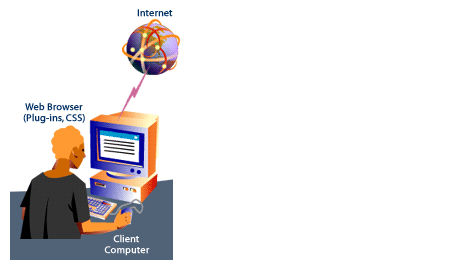
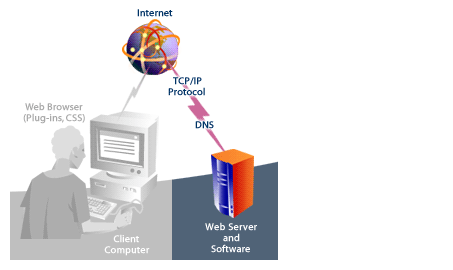
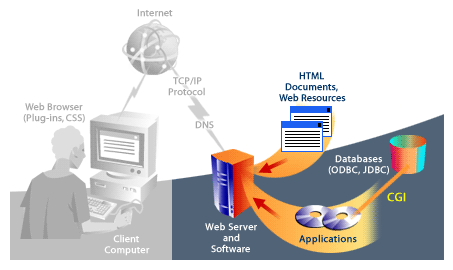
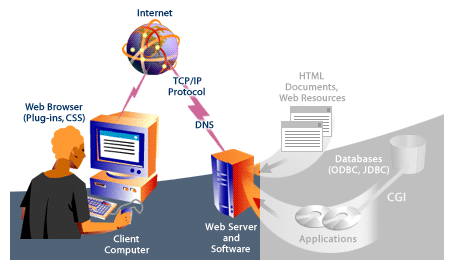
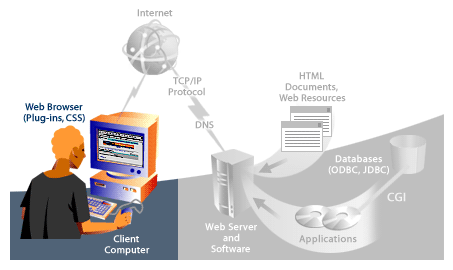
- The client clicks a link or enters text; HTML generates a request message to be sent over the internet.
- Internet protocols (TCP/IP) encode and transmit the request message over the internet.
- Web server software receives and reassembles the request message and gathers data from other documents and database applications for the response
- Internet protocols (TCP, IP) encode and transmit the response message packet over the Internet.
- The client's computer receives the response message packet of new information
Subscription Website Publishing
Network Internet Support Software Layer
The road less traveled
As you can see, the Internet is a very complex mechanism, with a great number of variables. It also provides a flexible means for routing high volumes of information. If you access the same site on two different occasions, your traffic may take an entirely different route based on the current levels of congestion on the Web and the traffic at specific Web servers. Responsible ISPs and Web site hosts will build redundancy into their networks or Web site planning.
This assures access to the information: if one route to the information is congested, a request will be sent over a different route; if one Web server is down, a request will be directed to a site mirror, or duplicate source.
The next lesson will identify the elements of the Hardware layer of the model.
This assures access to the information: if one route to the information is congested, a request will be sent over a different route; if one Web server is down, a request will be directed to a site mirror, or duplicate source.
The next lesson will identify the elements of the Hardware layer of the model.
Network Concepts - Quiz
Click the Quiz link below to check your comprehension of network concepts.
Network Concepts - Quiz
Network Concepts - Quiz
Web Network Data Science